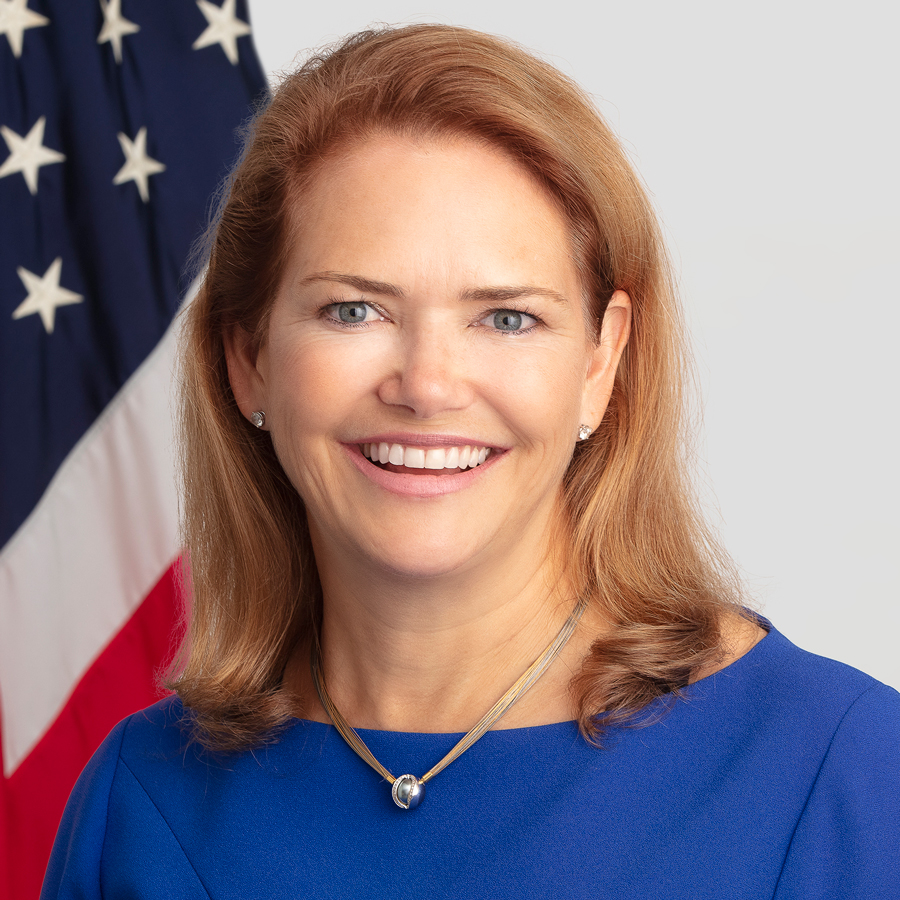
Rare Disease Day 2020: FDA Continues Important Work on Treatments for Rare Diseases
By: Stephen M. Hahn, M.D., Commissioner of Food and Drugs and Amy Abernethy, M.D., Ph.D., Principal Deputy Commissioner
As leaders of the FDA, every day we see the unwavering commitment of our agency in working to bring safe and effective treatments to Americans. This includes our efforts to get treatments to patients with rare diseases across the thousands of identified rare diseases. As we commemorate Rare Disease Day, recognized worldwide at the end of February each year to raise awareness about rare diseases and their impact on the lives of patients and their families, the FDA has made progress in mitigating the toll of rare diseases. We are undertaking a number of efforts to advance the development of medical products to meet the needs of the rare disease population.
There are approximately 7,000 rare diseases affecting an estimated 30 million people in the U.S. While every one of these individual diseases is rare, collectively they are not. Many of these diseases are serious or life-threatening and it is estimated that half affect children. Unfortunately, most rare diseases still do not have treatments.
To commemorate Rare Disease Day and to continue our long-standing dialogue with the rare disease community, the FDA is holding a public meeting February 24 to bring together stakeholders to address challenges and opportunities surrounding rare disease product development. Additionally, today we are pleased to announce three new actions that further support our efforts in this important space:
- New request for applications (RFA) for the Orphan Products Grants Program. The FDA funds research in rare diseases through Congressionally mandated programs like the Orphan Products Grants Program that supports natural history studies and clinical trials for rare diseases. The program has supported rare disease clinical trial research since 1983 and has facilitated the marketing approval of 70 of those products. To further increase the impact of the program in addressing the many unmet needs in rare diseases, this new RFA includes increased clarity of funding goals, continued emphasis on efficiency in all phases of product development, and added focus to including patient input into study designs, building successful infrastructure, and leveraging financial resources.
- Additional information on orphan “exclusivity protected uses.” Information will be available on the public orphan drug designations and approval website to highlight any differences between the approved indication in the label and the exclusivity protected indication. This will support rare disease product development by improving transparency and enhancing clarity for patients, providers, and drug developers by providing details of orphan protected indications.
- Enhanced rare disease patient website. We’ve set up an improved online presence to help patients and their families better navigate the FDA’s organization and its offices supporting the rare disease space: the FDA’s Office of Orphan Products Development; Patient Affairs Staff; and medical product centers. It also explains how patients and their families can get involved in our work.
It is encouraging that we continue to see significant progress in treating rare diseases and ongoing interest in developing rare disease treatments. The FDA has approved drugs and biologics for more than 800 rare disease indications. In 2019, the agency approved 22 novel drugs and biologics with orphan drug designation. In the Center for Drug Evaluation and Research (CDER), 21 of the 48 novel drug approvals, or 44%, were orphan products. In the Center for Biologics Evaluation and Research (CBER), 1 of the 5 novel biologic approvals, or 20%, were orphan products. As with previous years, this year’s new drug and biologic therapies include a number of novel approvals that address a variety of unmet rare disease needs.
Among the many new orphan therapies in 2019, several are particularly noteworthy including: the first triple combination therapy to treat patients with cystic fibrosis who have the most common form of the CF gene mutation; a new drug to increase pain-free light exposure in patients with phototoxic reactions (sensitivity to sunlight) due to erythropoietic protoporphyria; the first treatment for neuromyelitis optica spectrum disorder; and a new treatment for tenosynovial giant cell tumor. The FDA also approved a gene therapy to treat pediatric patients younger than two years of age with spinal muscular atrophy. In total, the FDA in 2019 approved 76 orphan indications, which included 22 novel drugs and biologics with orphan designation. Many important advances in drug and biologic therapies approved in 2019 use an already FDA-approved drug to treat a new disease beyond that for which it was originally approved or to treat a new population of patients, such as children.
In addition to drugs and biologics, we’ve seen progress in the development of medical devices for rare diseases. Since 1990, the Center for Devices and Radiological Health (CDRH) has approved 77 medical devices for orphan indications under the Humanitarian Device Exemption program. In 2019, the FDA approved three devices in the program. One of the devices is approved for use to treat adult patients with unresectable, locally advanced or metastatic, malignant pleural mesothelioma to be used concurrently with pemetrexed and platinum-based chemotherapy. CDRH is also currently working with stakeholders from across the medical device ecosystem to vet and further develop a framework, coined ‘SHIP’ (System of Hospitals for Innovation in Pediatrics), designed to incentivize device development for pediatric and small populations.
The number of orphan drug designation requests has steadily increased from 2012 through 2016 and has remained greater than 500 annually for the past four years. In 2019, the Office of Orphan Products Development received 533 new requests for designation, a 5% increase from 2018. This is important progress for improving the health of people with rare diseases. The growth will impact our capabilities until we strategically modernize our processes. Under our Orphan Drug Modernization Pilot Program we completed our review of 100% of all new orphan drug designation requests within our 90-day goal. Based on the continued volume and increased complexity of orphan drug designation requests, our goal for 2020 is to continue this commitment to quick turnaround and complete at least 90% of all new orphan drug designation requests within 90 days while also improving efficiency. We will continue to optimize our processes and workflows, and will strengthen our information technology and automation capabilities through our Orphan Drug Technology Modernization effort. This effort builds on the FDA’s Orphan Drug Modernization Plan and will streamline the orphan drug designation request process by moving from a paper-based process to a new cloud-based online submission portal.
Similar to the orphan drug designation program, the Rare Pediatric Disease Priority Review Voucher Program and Humanitarian Use Device Program are used to stimulate product development for rare diseases. In 2019, we received 64 new requests for rare pediatric disease designation and 21 new requests for humanitarian use device designation.
To provide clarity to help stakeholders support their planning of efficient product development programs for rare diseases, the FDA has issued several key guidance documents for industry. They include the: Humanitarian Device Exemption Program final guidance; six final guidance documents on gene therapy manufacturing and clinical development of products; a draft guidance on interpreting sameness of gene therapy under the orphan drug regulations; the Rare Pediatric Disease Priority Review Vouchers revised draft guidance; and the draft guidance, Rare Diseases: Natural History Studies for Drug Development.
Through funding on a variety of fronts, the agency has helped pave the way for further data collection and product development that is essential to our ongoing efforts. For example, CDER recently provided funding through a cooperative agreement with Critical Path Institute and the National Organization of Rare Disorders for the Rare Disease Cures Accelerator-Data Analytics Platform, an integrated database and analytics hub that will provide a centralized and standardized database to support and accelerate rare disease characterization.
In 2019, the FDA’s Orphan Products Clinical Trials Grants Program awarded grants providing funding supporting 12 new clinical trials totaling more than $15 million over the next four years to advance the development of products for the treatment of rare diseases. In addition, the Orphan Products Natural History Grants Program awarded two new research grants for natural history studies in rare diseases totaling more than $4.1 million over the next four years. With $6 million in annual funding the FDA is continuing to support five pediatric device consortia grantees to provide advice and support services to innovators of medical devices for children. These awards include three real-world evidence projects.
In 2019, CDER inaugurated a new pilot grant program to develop standard core sets of Clinical Outcome Assessments and endpoints for specific disease indications. Once developed these sets will be made publicly available at no cost or minimal cost. Two of the awards were for work on measures highly relevant for rare diseases. Specifically, one award supports work to identify clinical outcome assessments (COAs) and endpoints for use when developing acute pain therapeutics in infants and young children and the other award supports work to develop and validate COAs with applicability across a range of chronic conditions that assess physical function using patient-reported and performance outcomes. Also in 2019, funding was provided to establish a Rare Disease Clinical Outcome Assessment Consortium focusing on clinical outcome assessments appropriate for use in drug development to demonstrate clinical benefit. These rare disease research efforts are complementary and will help change the trajectory of rare disease product development.
Despite this progress, we recognize that thousands of rare diseases still have no approved treatments and that we need to do more to catalyze product development for rare diseases. In 2020, we plan to build on our programs with additional efforts including:
- Launching Version 2.0 of a patient portal that will give patients and caregivers a common entry point to the FDA for questions and meeting requests. Co-developed by the FDA’s Patient Affairs Staff and the agency’s medical product centers, the patient portal will route inquiries to the appropriate office to ensure that they are received and responded to in an effective and efficient manner.
- Continuation of the Rare Disease Listening Sessions Pilot to learn more about the experience of having a rare disease or condition directly from patients, caregivers and advocates.
- Communication through the Patient Matter Video Series to educate patients, caregivers and advocates on how to get involved in natural history studies and clinical trials.
- Establishment of an interactive webinar series called “Orphan Grantees Unite” to connect current Orphan Product grantees to advance their shared research goals and further the development of orphan products along the route to marketing approval.
We are certainly proud of our accomplishments on the rare disease front, but we know there is still much more important work to be done. We look forward to continuing our work with rare disease stakeholders to help address the unique challenges of developing therapies for rare diseases.
























.png)











No hay comentarios:
Publicar un comentario